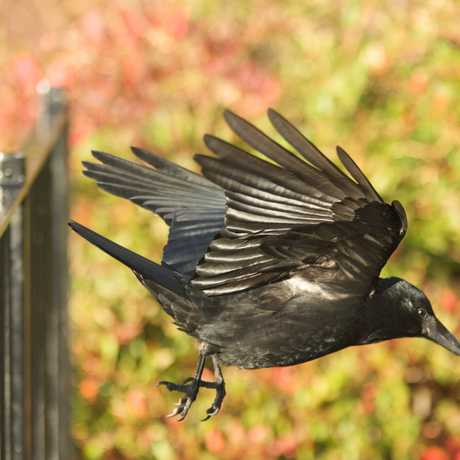Science News
Corvid Bites
Welcome to Science Today’s third annual Corvid Week, celebrating clever crows, resourceful ravens, and judicious jays. These are some of the most intelligent birds—or living things, for that matter—on the planet, and researchers are constantly learning more about the smart species that make up the Corvidae family.
Today, we’ll refer you to previous stories and videos we’ve posted about corvids to get you up to speed, but later this week, look for a new video and articles about how these birds learn, make tools and intelligently adapt to the changing world around them.
How smart are they?
One of our most popular articles this year examined how ravens appear to use theory of mind to understand the intent of other ravens to take available food—even if they can’t see the rival birds. This trait, only observed previously in primates, reinforces the intelligence of these birds, and their cousins, scrub jays.
Ravens aren’t just aware of their competitors, however. Another study found that ravens are fairly empathetic. Scientists observed ravens after a fight and found that the birds that weren’t involved in the fight (the bystanders) would console the victim, especially if the bystander had a relationship with the victim. In addition, after the conflict, the victim would cozy-up with the bystanders, in hopes of avoiding continued aggression.
Theory of mind, empathy, and self-control are all signs of intelligence. A recent study on self-control found that ravens, crows, and their relatives jackdaws all performed extremely well—as well as our cousins, the great apes—despite the birds’ smaller brains. “Self-control is essential to such complex cognitive skills as decision-making and planning,” the study said.
Speaking of complex cognitive skills… Scientists were inspired by an old Aesop’s Fable called the “Crow and the Pitcher,” to see if crows could use causal reasoning to reach food through water displacement. Wild birds were put through six different experiments, succeeding at four of them. (You can read more here.)
Tools, shmools
For the water displacement experiment above, crows used stones and other sinking tools to achieve their success and meals and indeed, much of crows’ perceived intelligence originates in the birds’ ability to use and even make tools for grabbing food. Science Today’s popular video on crow intelligence examines this tool-fashioning in detail and a recent article puts forth the notion that New Caledonian crows’ beaks evolved for tool-use!
No wonder they get a bad-rap
Finally, corvids don’t always have the best reputation. Many cultures see the birds as bad luck, tricksters, a sign of death, and madness. Maybe it’s just their opportunistic intelligence that makes them appear that way. But the way some corvid species raid other birds’ nests don’t do them any favors, either. A recent local story demonstrates just how problematic this can be, especially to threatened bird species.
One of my favorite raven stories is how the corvids wait for vultures to steal and open ostrich eggs. Once the tough shells are cracked, the ravens work in pairs to scare away the vultures, grabbing the delicious spoils when the vulture leaves. Smart birds!
Stay tuned for more corvid stories this week, but if you can’t wait, enjoy this older raven and crow post from the Academy’s Project Lab.
Raven image(s): barn9 LB and August Allen/Flickr








